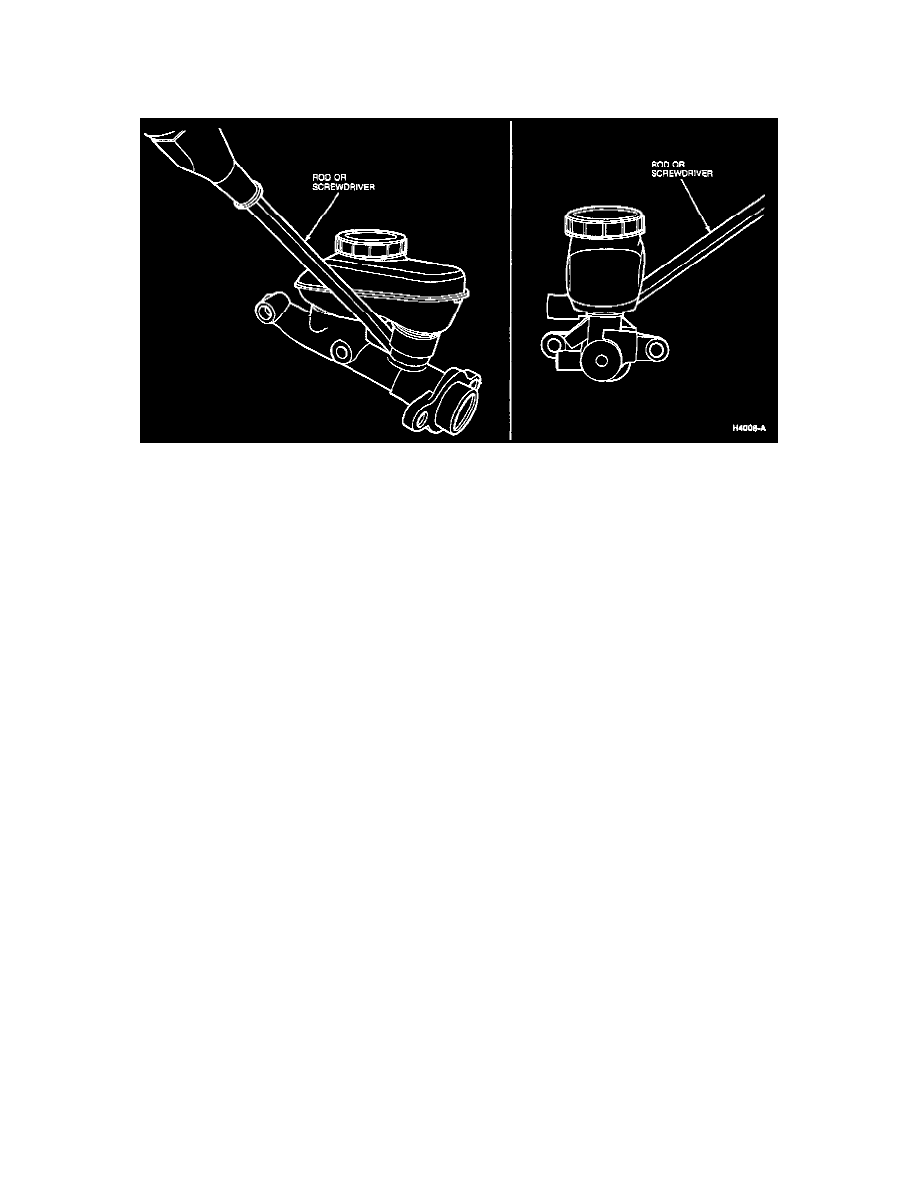Sable V6-232 3.8L (1988)

areas.
3. Remove primary and secondary piston assemblies from master cylinder. Tap open end of cylinder on bench to remove pistons. If secondary piston
does not readily come out, apply air pressure to secondary outlet port to assist removal.
Removing The Reservoir
4. Remove the reservoir.
a. Using needle nose pliers, remove float from reservoir.
b. Remove primary reservoir port from master cylinder by prying upward with rod or long screwdriver.
c. Remove secondary reservoir port in the same manner and discard complete reservoir assembly.
d. Remove grommets from master cylinder.
5. Remove the fluid control valve:
a. With a 12mm socket. remove fluid control valve from primary port. Inspect for contamination under seal or in center orifice.
NOTICE: The fluid control valve assembly is serviced as an assembly only. Do not attempt to service this unit.
INSPECTION
1. Wash master cylinder body, especially bore, along with primary and secondary piston assemblies in clean brake fluid, isopropyl alcohol or brake
parts cleaner.
2. Inspect seals on primary and secondary piston assemblies for cuts, nicks, scratches or signs of wear and for presence of any blistering or swelling.
NOTICE: Blistering or swelling indicates contamination of brake fluid by a petroleum-based solvent or oil. In that case, all rubber components in
the brake hydraulic system must be replaced and the entire system must be flushed with clean brake fluid to prevent recontamination.
If contamination is found, the components which must be replaced are:
^
Fluid control valve.
^
Front brake caliper seals.
^
Rubber front brake hoses.
^
Rear wheel cylinder seals.
^
Rubber rear brake hoses.
^
Pressure control valves.
^
Primary and secondary piston assemblies.
^
Reservoir grommets.
^
Cap assemblies.
3. Inspect master cylinder bore for pitting, corrosion or heavy wear. Heavy wear is characterized by scoring or galling of metal.
CAUTION: The aluminum body of the master cylinder is anodized. Some signs of bore wear, as evidenced by lighter areas of the anodized
